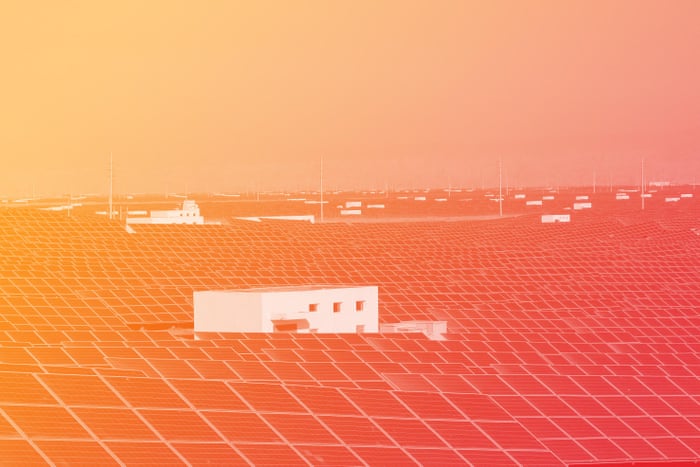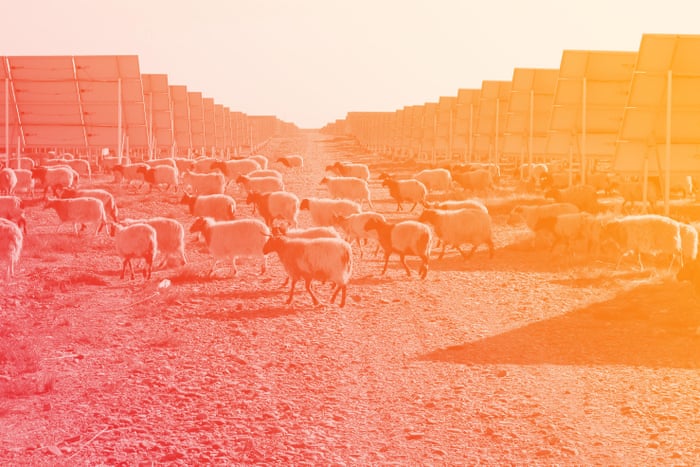Big & Bold
Big & bold - China lately has dramatically and unsuspectingly been emphasising the need for a greener future. The 2nd largest greenhouse gas emitter has developed a new monument of this modern era by creating the world's largest solar farm named Longyangxia Dam Solar Park in the western province of Qinghai.
It reaches 27 square kilometres, costed the equivalent of £721.3 m (I believe that's based on the exchange rate of January 2017) and could produce up to 850 MW of power. Now in case you (like me) have trouble understanding the scale of this 'farm' - 850 MW can power up to 200,000 households - according to 'The Guardian.' I would like to ask what type of households these are though, and what the average energy consumption of one is... statistics these days seem to stretch the truth as if it's their only job to do.
If you still can't quite understand the scale, here's a photo that may help you establish the space taken up by this vast place.
It all seems positive and just so - simple. They've even managed to make use of the land that would otherwise waste away as a dust bowl by the looks of things
To me, you could say this looks idyllic. Little waste, cost-effective and building a sustainable life for the future of which we all can live off. It gives us hope that renewable energy is going to keep on becoming the norm and grow exponentially. It gives us hope that our communities can learn & grow in piece with the environment. It gives us hope for a safer future in which developers believe in themselves saying Trump's claims of climate change being a Chinese hoax would do nothing to dampen the enthusiasm for a low-carbon future.
“New energy is surely the future ... It’s hard to predict the future but I believe that solar energy will account for 50% of the total in 50 years,” said the engineer Gu.
However, amongst all this vibrancy and hopefulness, I can't stop seeing an odd bleakness and lack of meaning to this land. It all seems so... lost.
I tried to find more about what these sheep are used for; where they are kept and what they eat, as blocking up the sun like that must limit the available grassland for them to graze upon. I couldn't find anything.
I also wanted to find out more about this land. Its history, its topography, culture. It lies near an Arch gravity dam for the purposes of hydroelectric power generation, irrigation, ice control and flood control. But irrigation for whom?
I couldn't find out how long the reservoir has been there, nor if anyone has ever lived there before. There was no accessible information directly about this land.
The province it's located in has a large expanse, but the 3rd smallest population of all of China's provinces. Does this mean that all this land was just vacant? A dusty mass for all those years?
Maybe so but I just don't know.
I'm all for a way of living which has no impact on the world we love. But that's exactly the point. The world we love is full of vibrant diversity, incredible cultures and a mesmerising fragile ecosystem. We can't just claim to become a sustainable culture if we discriminate and demolish other lands far away from us. We need to work together to do this. Everything we do is a choice and now we must join together to show the world what we want and how incredible we can be when we all fight for one thing. Our time is running out, quite literally. The time to change is now.
H _ M
:)
Bibliography:
https://www.theguardian.com/environment/2017/jan/19/china-builds-worlds-biggest-solar-farm-in-journey-to-become-green-superpower
https://en.wikipedia.org/wiki/Qinghai
It reaches 27 square kilometres, costed the equivalent of £721.3 m (I believe that's based on the exchange rate of January 2017) and could produce up to 850 MW of power. Now in case you (like me) have trouble understanding the scale of this 'farm' - 850 MW can power up to 200,000 households - according to 'The Guardian.' I would like to ask what type of households these are though, and what the average energy consumption of one is... statistics these days seem to stretch the truth as if it's their only job to do.
If you still can't quite understand the scale, here's a photo that may help you establish the space taken up by this vast place.
 |
| Photograph: Tom Phillips for the Guardian |
 |
| Photograph: Tom Phillips for the Guardian |
“New energy is surely the future ... It’s hard to predict the future but I believe that solar energy will account for 50% of the total in 50 years,” said the engineer Gu.
However, amongst all this vibrancy and hopefulness, I can't stop seeing an odd bleakness and lack of meaning to this land. It all seems so... lost.
I tried to find more about what these sheep are used for; where they are kept and what they eat, as blocking up the sun like that must limit the available grassland for them to graze upon. I couldn't find anything.
I also wanted to find out more about this land. Its history, its topography, culture. It lies near an Arch gravity dam for the purposes of hydroelectric power generation, irrigation, ice control and flood control. But irrigation for whom?
I couldn't find out how long the reservoir has been there, nor if anyone has ever lived there before. There was no accessible information directly about this land.
The province it's located in has a large expanse, but the 3rd smallest population of all of China's provinces. Does this mean that all this land was just vacant? A dusty mass for all those years?
Maybe so but I just don't know.
I'm all for a way of living which has no impact on the world we love. But that's exactly the point. The world we love is full of vibrant diversity, incredible cultures and a mesmerising fragile ecosystem. We can't just claim to become a sustainable culture if we discriminate and demolish other lands far away from us. We need to work together to do this. Everything we do is a choice and now we must join together to show the world what we want and how incredible we can be when we all fight for one thing. Our time is running out, quite literally. The time to change is now.
H _ M
:)
Bibliography:
https://www.theguardian.com/environment/2017/jan/19/china-builds-worlds-biggest-solar-farm-in-journey-to-become-green-superpower
https://en.wikipedia.org/wiki/Qinghai


Comments
Post a Comment